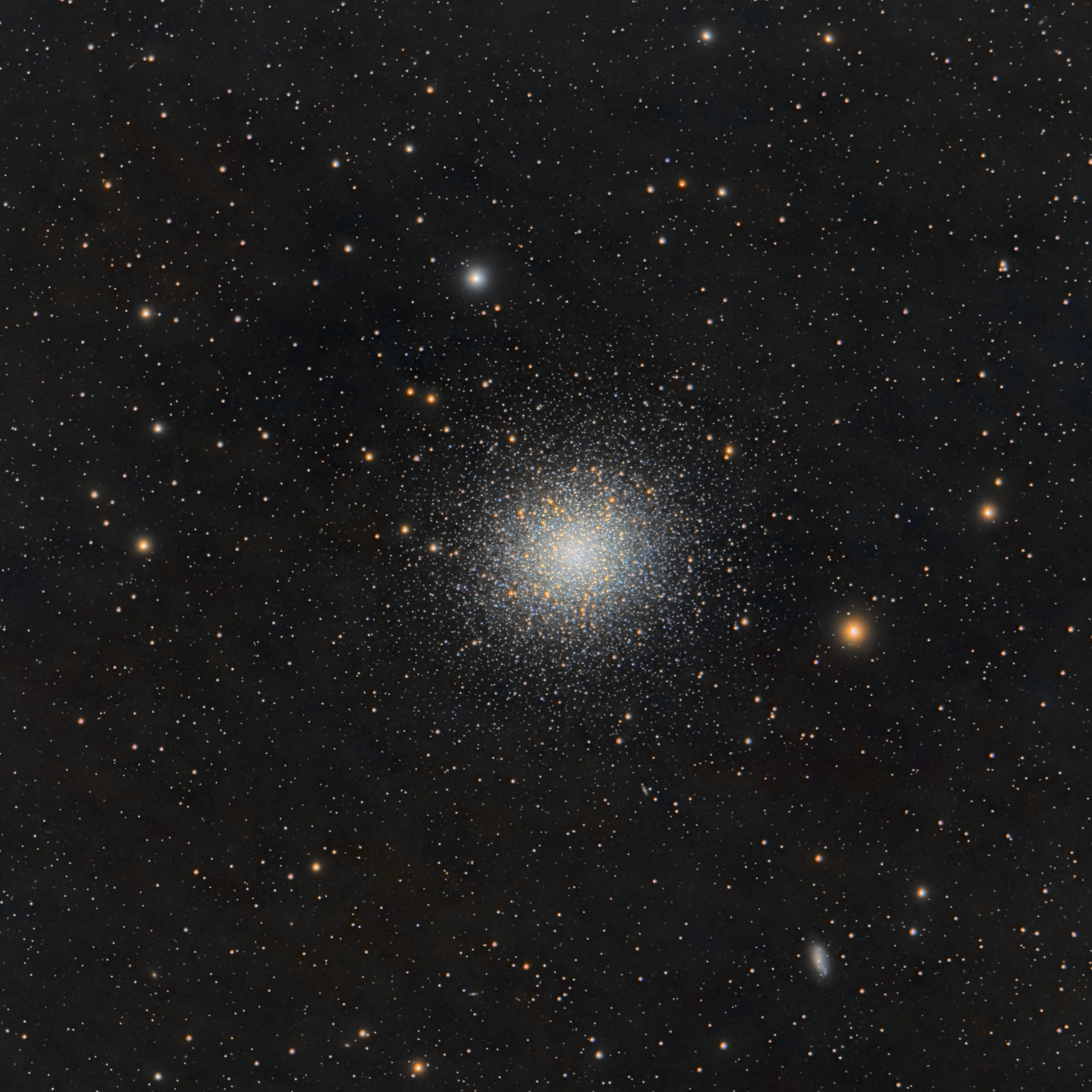June, 2022
Imaging: TS80 apo, ZWO ASI533 (100 gain, 0C), NeodymiumSubs: 1029x20s (6h), darks, flats, and darkflats
Software: NINA, Phd2, PixInsight
(Additional notes below)
Gallery
Notes
The Great Hercules Globular cluster, Messier 13. According to Wikipedia, Hercules is comprised of several hundred thousand stars. It is the largest globular cluster viewable in the northern hemisphere at about 145 LY in diameter. In dark skies, it might be just barely visible to the naked eye. Compared to our sun and its neighboring stars, the stars in the Hercules cluster are more than a hundred times denser (and sometimes collide with each other).This is my second year image of Hercules. For the one last year, I already had all the current gear so the improvement in this one is not as dramatic compared to other targets. To reduce the over-exposure of the core, this year I took 20s subs instead of 60s last year. And I used additional post-processing techniques that I learned since then. These actions showed improvement in two areas. First the core is more resolved, and one can see more of the individual stars in the core. Second, the fainter stars around the edges are now visible, showing the larger extent of the cluster.
To see the change from my Jun 2021 version, take a look at this GIF.
